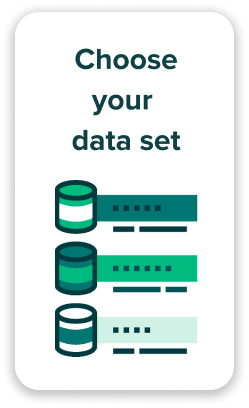
Crisp for Developers
Build powerful CPG solutions backed by timely, granular retail data
The Crisp data platform automatically ingests and normalizes a brand’s data from 40+ retailers and distributors, then integrates it seamlessly into your destination of choice – helping developers build value-added insights and applications for CPG customers.
Don’t waste your time aggregating data.
With Crisp, you can avoid the cumbersome retail data ingestion process and rely on the data, documentation, and support you need to do what you do best.
Start with data that’s clean, granular, and ready-to-use
Refreshed Daily
Standardized across retail data sources
Granular at the SKU and store level
Includes up to two years of historical backfill


Comprehensive datasets provided by each retailer and distributor include:
- Supply chain: DC fill rates, DC inventory, DC to store shipments, store inventory, and more
- Sales: Point-of-sales, velocity, distribution, pricing, promotions, and product information
- Category: Crisp will provide the full depth and breadth of category data that retailers make available to category advisors
- Much more: Crisp provides additional datasets depending on source availability, including age of inventory, spoilage risk, and chargebacks and deductions
Data from Crisp can be used to uncover actionable insights for CPGs:
- Out-of-stocks: Monitor supply levels at Distribution Centers and retail locations alongside projected sales to allocate inventory and keep shelves stocked. Timely visibility into excess or aging inventory can also help suppliers and retailers collaborate to reduce waste.
- Sales and merchandising: With daily visibility into store-level sales performance, suppliers can capitalize on trends, optimize assortments, measure the impact of promotions, and refine merchandising strategies.
- Forecasting and planning: Access to current and historical data across retail locations helps CPG teams improve forecasting to inform product assortments, demand planning, and operations.




Choose from source or normalized data sets
In addition to automating the ingestion of retail data, Crisp also cleans and organizes data, so you can spend less time on data prep and more time on actual analysis.
- Use Source data if you’re developing a replacement for existing data pipelines or want to do your own data modeling. The source data schemata closely resemble what the upstream data source provides, so you can leverage any preexisting modeling experience with this data.
- Use Normalized data if you’re developing retailer- or distributor- specific solutions and want to leverage the full breadth of data each retailer shares.
Explore Crisp’s Sample Data Sets
Crisp offers a small subset of available data publicly as a sample data set. For full access to Crisp’s data catalog, create a developer account.
Sample data includes the following data models:
- Retailer sales
- Retailer inventory
- Retailer distribution center inventory
The data attributes contained in the below models include:
- Product Name
- Product UPC
- Store
- Store Latitude and Longitude
- Sales Amount
- Sales Quantity
- Distribution Center
- Distribution Center Latitude and Longitude
- On Hand Quantity

Users of Google Cloud’s BigQuery can instantly query Crisp’s sample datasets from their GCP projects with simple project_id.dataset_id.table_name addressing. Identical datasets are located in both the US and EU multiregion for convenience.
Please note that while primary storage of these datasets is provided by Crisp, the Google account accessing them will be responsible for subsequent downloading and processing costs.
Crisp sample data is available in cloud object storage on GCS in both the US and EU multiregion. Load these compressed Parquet files into the analytic environment of your choice, or use them instantly on your local machine with tools like DuckDB.
Please note that while primary storage of these datasets is provided by Crisp, the Google account accessing them will be responsible for subsequent downloading and processing costs.
Databricks customers can leverage delta sharing to access sample data sets via our free offering on the Databricks Marketplace. Instantly access our sample data in your Databricks workspace regardless of your underlying cloud platform of choice.
Snowflake customers can find sample data sets via Crisp’s free listing on the Snowflake Marketplace. Instantly access our sample data using a secure data share in your Snowflake account.
Sign up for a developer account
Do you already work with a CPG client and want to partner with Crisp to leverage timely, actionable retail data? Contact our team today.